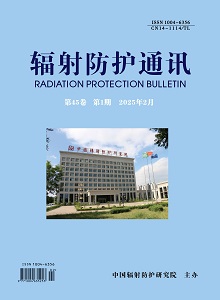[an error occurred while processing this directive]
Bimonthly,Founded in 1978
Supervisor: China Nuclear Industry Group Corporation
Sponsor: Radiation Protection Branch of China Nuclear Society
ISSN: 1000-8187
CN: 14-1143/TL
Postal Code: 22-173
Supervisor: China Nuclear Industry Group Corporation
Sponsor: Radiation Protection Branch of China Nuclear Society
ISSN: 1000-8187
CN: 14-1143/TL
Postal Code: 22-173

Bimonthly,Founded in 1978
Supervisor: China Nuclear Industry Group Corporation
Sponsor: Radiation Protection Branch of China Nuclear Society
Publishing Editor: Editorial Department of Radiation Protection
ISSN: 1000-8187
CN: 14-1143/TL
Postal Code: 22-173
Supervisor: China Nuclear Industry Group Corporation
Sponsor: Radiation Protection Branch of China Nuclear Society
Publishing Editor: Editorial Department of Radiation Protection
ISSN: 1000-8187
CN: 14-1143/TL
Postal Code: 22-173

